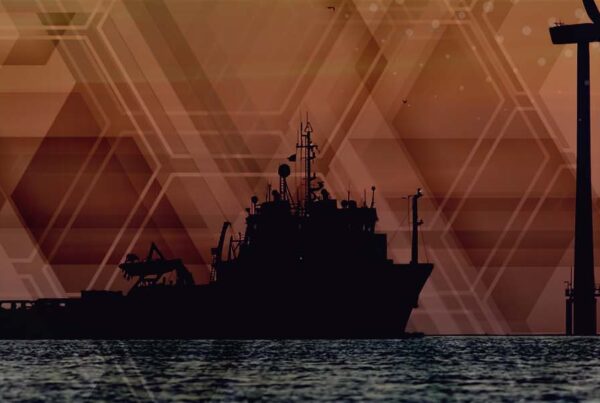As we are into the first month of the new year, some reports suggest that there is little or no drillship availability in 2022. Is that really the case, or can an operator find a 6th or 7th generation drillship for a program starting this year? The following will attempt to answer that question, using help from the RigLogix database, as well as what we believe is likely to happen, some of which is not yet “public”. A warning: there will be a lot of numbers to go through, but we will try to make this as clear and concise as possible.
Find out more about RigLogix Advanced, including the new Supply & Demand Scenarios here.
As we are into the first month of the new year, some reports suggest that there is little or no drillship availability in 2022. Is that really the case, or can an operator find a 6th or 7th generation drillship for a program starting this year? The following will attempt to answer that question, using help from the RigLogix database, as well as what we believe is likely to happen, some of which is not yet “public”. A warning: there will be a lot of numbers to go through, but we will try to make this as clear and concise as possible.
First, how many rigs are we talking about? At present, the global 7th generation fleet comprises 44 units, while 6th generation units total 42. It seems like a stretch to say that there is not one of 86 rigs available, but a deep dive into the data does, however, indicate that there may not be that many. So, let’s break down the numbers.
First, we should establish a few basics. The age range of the 7th generation fleet ranges from just a couple of months (Santorini) to as old as 12.7 years (Dhirubhai KG1), but with an average age of just 7.3 years, it is overall a young fleet. This group of rigs consists of three primary designs – GustoMSC, Samsung and Daewoo. Just over 90% of the fleet is owned by five contractors – Transocean (14), Valaris (10), Noble Drilling (8), Diamond Offshore (4) and Maersk Drilling (4). Noble’s total will jump to 12 in 2022 once its merger with Maersk is completed.
Meanwhile, the 6th generation fleet is slightly older on average at 10.4 years, with the ages ranging from the youngest at 6.9 years (West Carina) to the oldest at 14 years (Stena DrillMAX). Within this fleet, GustoMSC, Samsung and Daewoo designs account for 35 of the 42 rigs, with Transocean (5) and Huisman (2) rounding out the fleet. While there are 14 different rig owners, Transocean (9) and Seadrill (7) own the most, with Ocyan, Stena Drilling and Vantage Drilling each owning four units.
With that out of the way, let’s get right to availability. Of the 44 units designated as 7th generation, we can start by removing 21 that have contracts which already run through 2022 or later (including three that go into December), leaving 23 rigs.
Nine are cold stacked, and these will be removed from our list. If any of these are reactivated it will be with a contract in hand, and one that will likely employ it beyond the end of this year, so there is essentially no available time on those units in 2022. This brings our list down to 14.
Of the remaining 14 units, 11 have options that will keep them working through 2022 or beyond or have follow-up contracts we believe will be awarded, which will do the same. One unit has a contract that ends in October, but its past extension history leads us to believe that it will be extended again, although no formal term is known at this juncture. Another of the 11 has at present a 150-day gap between the end of its current charter and the start of another program that will begin around August, so whether it will require shipyard time and depending on if the rig owner would take any work in between is questionable. So, with these 11 rigs likely gone, it leaves just three, 7th generation units with any substantial available time this year.
Turning to the 42-rig, 6th generation fleet, 20 are already contracted through 2022 or later, so those can be taken off the list. Of the 22 remaining units, eight are cold stacked or will require substantial reactivation time, and using the same reactivation logic as above, we can take those out of the count, reducing the available fleet to 14.
One of the 14 is owned by and works exclusively for a state-owned operator, so that can be removed from the list. There are then nine other units that either have extensions or are expected to receive follow-up contracts that will remove any availability they might have this year. One unit does have a 90-day idle gap between completion of its current contract in February and its next one that begins in May, but is otherwise committed into January 2023, so while it could have a very short window of opportunity, it is not likely to be much. These deductions leaves four, 6th generation units with availability this year.
Table 1 below details the seven drillships that we believe could be available for work in 2022. The date available assumes all options on contracts are exercised. From the data, we see that the one idle unit recently completed a contract and at present is readily available. Of the six remaining rigs, we are unaware of any work beyond what is shown. The rigs shaded in green are those we believe could end up with additional work for the current operator or will have follow-up work that could very well take them off the list.
| Rig Manager | Rig Name | Operator | Country | Date Available | Rig Age | Rig Gen | Rig Status |
| Saipem | Saipem 12000 | Eni | Kenya | 2022-06-26 | 11.7 | 6 | Drilling |
| Vantage Drilling | Tungsten Explorer | Petrobel | Egypt | 2022-07-02 | 8.5 | 6 | Drilling |
| Noble Drilling | Noble Globetrotter I | Shell | US | 2022-07-14 | 10.0 | 6 | Drilling |
| Seadrill Ltd | West Gemini | TotalEnergies | Angola | 2022-10-14 | 11.5 | 6 | Drilling |
| Transocean | Dhirubhai Deepwater KG2 | Malaysia | 2022-01-17 | 12.2 | 7 | Hot Stacked | |
| Transocean | Deepwater Invictus | BHP | US | 2022-05-19 | 7.8 | 7 | Drilling |
| Transocean | Deepwater Asgard | Hess Corporation | US | 2022-05-13 | 7.9 | 7 | Drilling |
Table 1: Drillship Availability 2022
Source: RigLogix
So, if these rigs have availability, how much time is there and where is the work that could possibly absorb them? According to the dates from Table 1, there is 1,352 rig days, or 3.7 rig years of available time for the seven rigs. Of course, that time goes down as further work is secured and only two units have any time open before the middle of the year.
As for potential work locations, RigLogix currently identifies 25 programs in some form of rig inquiry, that is expression of interest/pre-tender (11) or active tenders (14). Of the latter, six are in Africa, three in Mexico, two each in Malaysia and the US Gulf of Mexico, and one in Egypt. Based on market reports and internal analysis, we believe the two US Gulf programs have rigs identified – both with 6th generation drillships that would have been on the above list otherwise.
This leaves 23 requirements that need rigs, far more than there are rigs available. However, as drilling start dates are fluid, a number of these will simply be pushed into 2023 when there is rig availability. Nevertheless, the data does suggest that the window operators have in securing a rig for this year is closing.
Terry Childs, Head of RigLogix
[email protected]





